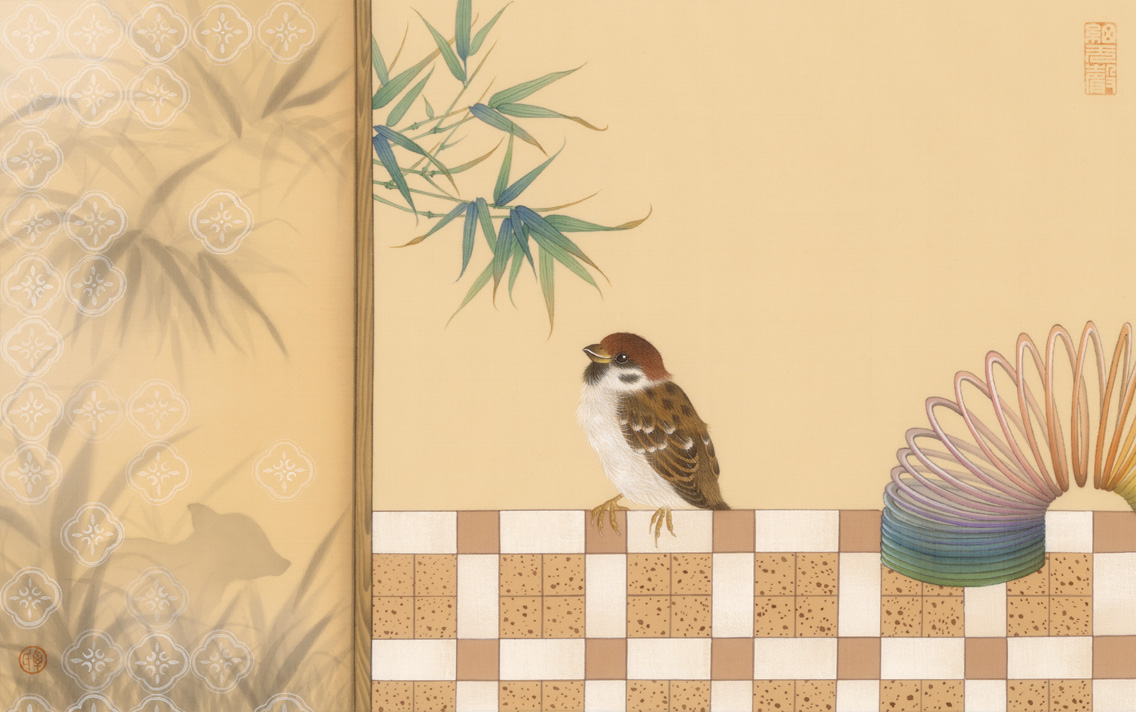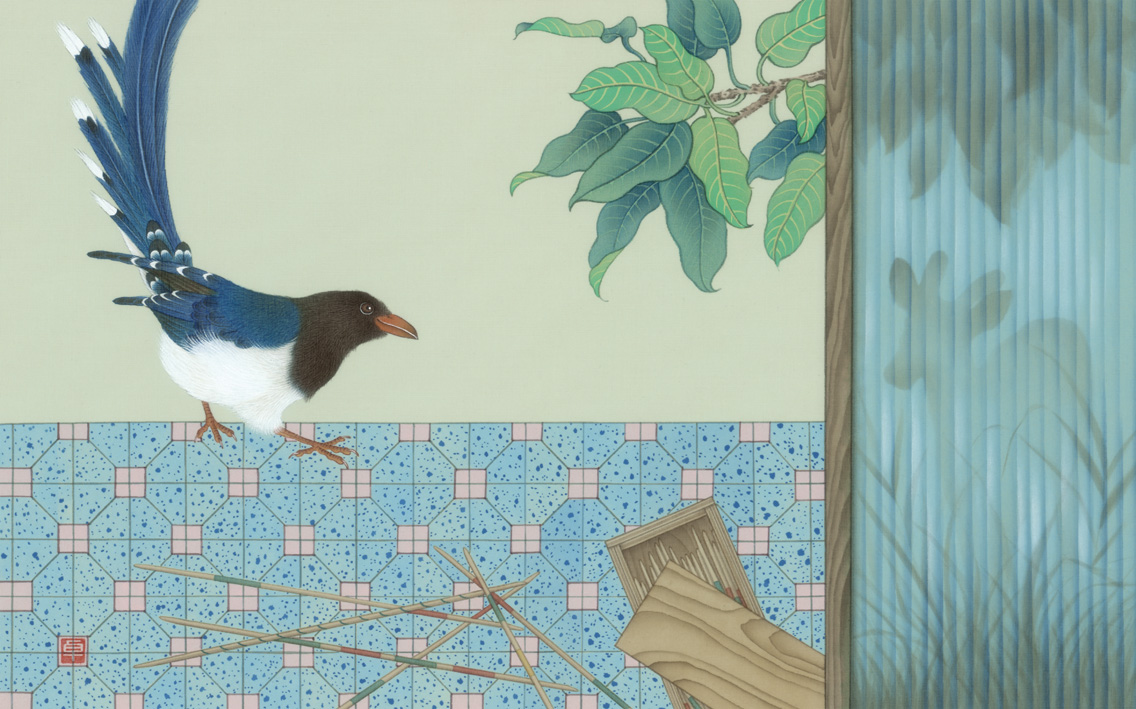卓 家 慧
Cherie Cheuk Ka-wai (lives and works in Hong Kong) received a BA and MFA from the Fine Arts Department at the Chinese University of Hong Kong (CUHK) in 2012 and 2017 respectively. Cheuk excels at depicting the fine details of bird feathers and animal fur. With her exquisite gongbi brushwork, delicate colour scheme, and varied narratives, Cheuk makes imaginative and enlightening paintings, giving traditional motifs a new and fresh touch.
Cheuk has been featured in several major group exhibitions, including Art Taipei (2019, 2021), Ink Global (2017), and Ink Asia (2015, 2016, 2017). She has held three solo exhibitions, including her first solo show in Taipei in 2019. She has recently collaborated with the Hong Kong Museum of Art and the Flagstaff House Museum of Tea Ware. Her works have been collected by the Hong Kong Museum of Art and private collections in Asia and overseas.
卓家慧,香港居住及工作,2012年取得香港中文大學藝術系文學士一級榮譽學位;2017年於同校藝術碩士課程畢業。卓氏以工筆為語言,擅長描繪翎毛與走獸,透過慎密的刻畫、細膩的色彩層次、多變的構圖敘事來抒發現代人的情感、想像、與惺悟,為傳統工筆藝術注入當代活力。
卓氏的作品見於多個大型展覽,包括「台北國際藝術博覽會」(2019,2021)、「全球水墨畫大展」(2017)、「水墨藝博」(2015,2016,2017)等。她曾舉辦三次個展。2019年首次在台北舉行海外個人畫展「時間的餘韻」。近年與香港藝術館及香港茶具文物館合作藝術創作計劃,作品獲香港藝術館藏及亞洲與海外私人收藏。
Artist’s Statement
I see gongbi (fine-brush) painting as a language. The linear contours, the variegated washes, and the flat application of paint are like rhetoric, tone, and syntax. The same techniques, when approached differently by individual gongbi painters, can create distinctive visual effects. I am interested in the three alums and nine washes in the gongbi tradition, and I focus on patiently layering washes to present a refined image, as if I were simultaneously capturing emotions and ideas. I pay particular attention to the use of colour, the treatment of the pigment, and the realisation of gentle, charming colours through layers of ink and wash. After mastering these graceful, refined rhetorical methods, I can use the content and composition of the paintings, blended with slightly unconventional ideas, to express my own emotions and realisations.
Eastern Jin poet Tao Yuanming (365–427) wrote “Lingering Clouds” to express the concerns he had when thinking of distant friends and relatives. Hong Kong writer Xi Xi (b. 1937) penned her “Lingering Clouds” to share her care for society. Following in the footsteps of artists I admire, I have used my Lingering Clouds to depict old feelings, childhood toys, and the wild birds and animals of the city. In my city, where the urban and the rural coexist and the new and the old collide, I would like to show my care and concern through fine lines and delicate colours. The lingering clouds are misty yet dense.
藝術家自述
我視工筆為一種語言。勾線、分染、平塗等技巧就像修辭、語調、句法。同樣的技巧,不同的運用,在不同的工筆藝術家筆下,都能構成不同的風格面貌。而我重視工筆傳統的三礬九染過程,重視在耐心地層層疊染的累積下,呈現細膩的畫面,像同時凝住情感與思緒。尤其重視如何用色、如何處理顏料、如何透過疊加墨與色彩達至柔和而妍麗之色。我希望掌握這些優美細膩的修辭法後,再好好透過畫中內容、構圖佈局、與一點奇思妙想來抒發個人情感與惺悟。
東晉詩人陶淵明(365–427)寫《停雲》以思親友憂時局。香港作家西西(1937年生)寫《停雲》以關懷社會。追跡前人腳步,我以《停雲》描繪舊時風情、兒時玩物、與我城野鳥動物。在這個城鄉毗鄰共生、新事舊物碰撞的我城,透過細膩的線條與色彩,寫一頁關顧與眷念的絮語。停雲靄靄,聚而不散。


